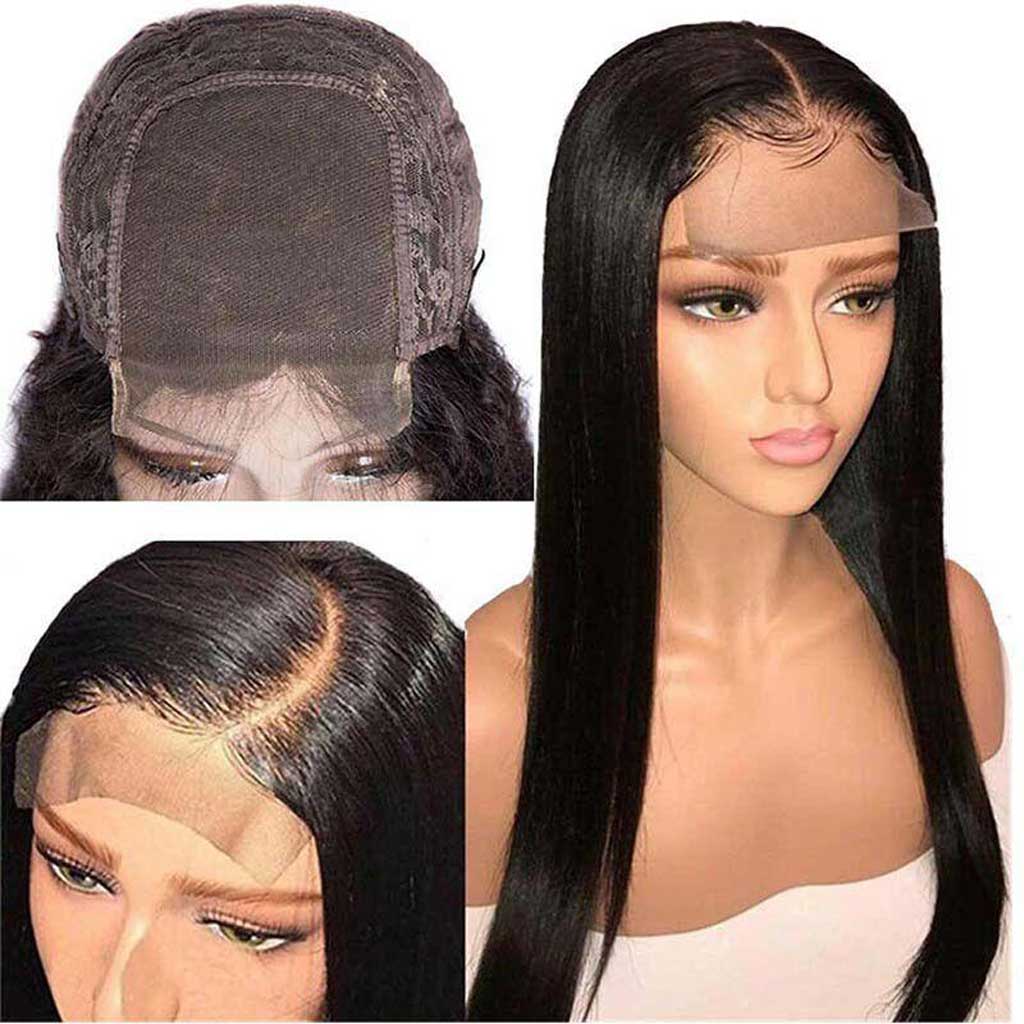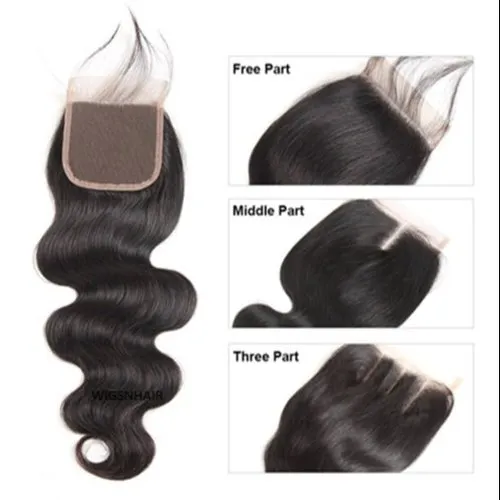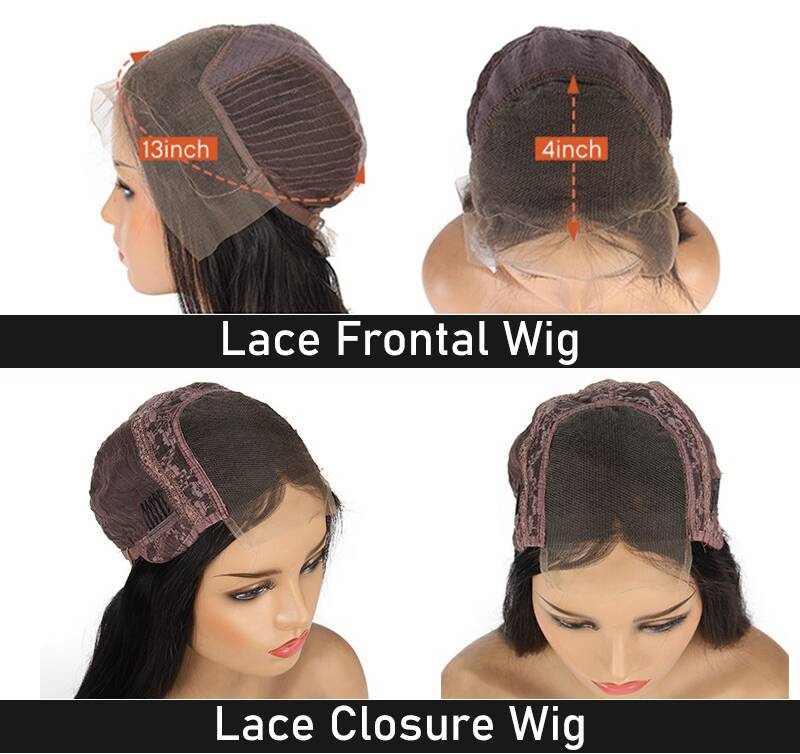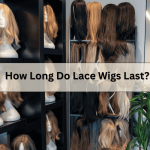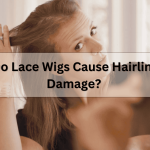Hair Knowledge
Top 5 Things You Need to Know Before Buying a Closure Wig
Closure wig is becoming increasingly popular for those who want a natural look without spending hours styling their hair. But if you’re new to wigs, you might be wondering: What exactly is a closure wig? How is it different from a frontal wig? And is it the right choice for you?
To help you decide, here are the 5 most important things you need to know before buying a closure wig.
1. What Is a Closure Wig?
A closure wig is a type of wig that uses a lace or silk piece—usually in sizes 4×4, 5×5, or 6×6 inches—placed at the crown of the head. This lace piece acts as a “scalp imitation”, giving the illusion that the hair is growing directly from your natural scalp.
The closure is sewn or attached onto the wig cap, and hair strands (human or synthetic) are individually hand-tied into the lace. This makes the hairline and parting look more realistic and seamless compared to traditional machine-made wigs.
Unlike a frontal wig, which stretches from ear to ear and allows for more dramatic styling (like ponytails or buns), a closure wig is more compact and centered. It typically covers only the middle portion of the front hairline, which makes it:
-
Easier to install (great for beginners).
-
Less maintenance-intensive compared to lace frontals.
-
More affordable, since less lace is used.
Closure wigs come in three main lace designs:
-
Lace Closure Wig – the most common, breathable, and natural-looking.
-
Silk Base Closure Wig – thicker base that hides knots better, giving the illusion of an actual scalp.
-
HD Lace Closure Wig – ultra-thin and nearly invisible, blending effortlessly with all skin tones.
In short, a closure wig is the perfect balance between a natural look and ease of use. It’s especially popular among women who want a protective style without committing to the complexity or price of a frontal wig.
2. The Most Popular Types of Closure Wigs
When stocking closure wigs for your salon, it’s important to understand the main types available. Each closure type has its own strengths in terms of styling flexibility, maintenance, and client satisfaction. Here are the three most popular options:
2.1. Middle Part Closure Wig
A middle part closure comes with a fixed center part. This design creates a very clean, symmetrical, and classic look that many clients prefer for everyday wear or professional settings.
From a salon perspective, middle part closures are easy to install and style. Since the parting is pre-set, you don’t need to spend extra time customizing the lace, making it a great option for quick appointments or clients who want a low-maintenance wig.
These wigs are especially popular with clients who like sleek straight hair, long body waves, or polished curls. They are also ideal for women who prefer a timeless, elegant look without changing partings frequently.
2.2. Free Part Closure Wig
The free part closure is one of the most versatile options, as it allows clients to create a part anywhere within the lace area. Whether they want a middle, side, or even a zig-zag part, this closure adapts easily.
For salon owners, this means you can offer your clients more styling freedom with just one wig. Instead of buying multiple wigs for different looks, your clients can achieve a variety of hairstyles with a single free-part closure.
This option is perfect for clients who love experimenting with styles—such as switching between casual daytime looks and glamorous evening styles. It also works well for fashion-conscious clients who want their wig to mimic natural hair versatility.
2.3. Three-Part Closure Wig
A three-part closure wig comes pre-designed with three defined partings: middle, left, and right. This makes it a great choice for clients who want variety but don’t want the hassle of constantly restyling the lace themselves.
For salon professionals, three-part closures are a time-saver. You can quickly switch between partings during styling sessions without needing to pluck or adjust the lace extensively. This is especially useful for clients who like to change their look often but still want a neat, natural finish.
These wigs are very popular among women who want flexibility without advanced wig-handling skills, making them a strong recommendation for beginners or busy professionals.
✅ Salon Tip for Business Owners:
-
Stock middle part closures for clients who love a polished, everyday style.
-
Keep free part closures for those who want maximum styling flexibility.
-
Recommend three-part closures to beginners or clients who want variety without maintenance challenges.
3. Pros and Cons of Closure Wigs
Like every wig type, closure wigs come with their strengths and limitations. As a salon owner, understanding these will help you recommend the right product to each client while managing their expectations.
Pros of Closure Wigs
1. Easy to Install and Maintain
Closure wigs are less complicated than frontal wigs, making them beginner-friendly. For salons, this means faster installation times, lower service costs, and satisfied clients who appreciate the simplicity.
2. Protective for Natural Hair
Closures allow clients to keep their natural hair braided underneath, reducing heat and styling damage. This makes them a top choice for women experiencing thinning hair, breakage, or simply wanting to protect their natural strands.
3. Affordable Compared to Frontals
Since closures use less lace material, they are more budget-friendly. This affordability makes them easier to sell to clients, especially those new to wigs who aren’t ready to invest heavily in a full lace or frontal.
4. Natural-Looking Finish
A well-installed closure wig gives a very realistic scalp appearance, especially when bleached or tinted correctly. For salons, this ensures client satisfaction and repeat business, as clients love the confidence boost from a natural finish.
5. Versatile Options
With different sizes (4×4, 5×5, 6×6) and types (middle, free, three-part), closure wigs offer styling flexibility. This gives salons the chance to upsell premium closure sizes or recommend specific closures tailored to clients’ lifestyles.
Cons of Closure Wigs
1. Limited Styling Range
Unlike frontal wigs, closures don’t allow full hairline exposure. Clients can’t pull the hair back into high ponytails or updos, which may frustrate those seeking more styling versatility.
2. Visible Lace if Not Installed Well
If not properly plucked, tinted, or laid flat, the lace can look obvious. This puts pressure on salon stylists to ensure flawless application—otherwise, clients may feel the wig looks less natural.
3. Smaller Coverage Area
Because closures only cover a portion of the scalp, clients with significant hair loss at the front may find them less suitable. In such cases, salons may need to recommend frontal wigs or full lace alternatives.
4. Regular Adjustment Needed
Closures can sometimes shift or lift at the edges after extended wear. Clients who expect a long-lasting hold may need to return for touch-ups, which can be both an opportunity (extra services) and a drawback (extra maintenance).
5. Not Ideal for Active Lifestyles
For clients who work out often or sweat a lot, closures may not provide the strongest hold compared to frontal or glueless options. This could limit their appeal for highly active customers.
✅ Salon Insight:
Closures are best recommended to clients who want low-maintenance, affordable, and natural-looking wigs. For clients who prioritize styling freedom or full coverage, frontals or full lace wigs might be a better upsell.
4. Closure Wig vs. Frontal Wig: The Key Differences
Many people confuse closure wigs with frontal wigs, but here’s how they compare:
| Feature | Closure Wig | Frontal Wig | Traditional Wig |
|---|---|---|---|
| Lace Size | 4×4, 5×5, or 6×6 inches | 13×4 or 13×6 inches (ear to ear) | No lace, machine-made |
| Look & Realism | Natural parting, scalp-like effect | Most realistic, full hairline | Less natural |
| Styling Options | Limited (middle or side part) | Versatile (pony, bun, updo) | Minimal |
| Ease of Use | Beginner-friendly | Requires skill to install | Very easy |
| Maintenance | Low | High | Very low |
| Cost | Affordable | Higher price | Cheapest |
| Best For | Everyday wear, simple styles | Glam looks, special occasions | Quick wear, budget buyers |
5. How to Care for Your Closure Wig
Proper care is the key to making closure wigs last longer while keeping them looking natural. As a salon owner, teaching your clients how to maintain their wigs not only protects their investment but also builds trust in your services. Here are the essential care steps:
1. Gentle Washing Routine
Use sulfate-free shampoo and lukewarm water to cleanse the wig. Always wash in one direction—from roots to ends—to prevent tangling and shedding. Over-washing can dry out the hair, so recommend cleaning only after 8–10 wears or when there’s visible buildup.
2. Deep Conditioning
Apply a lightweight conditioner or a hydrating mask after shampooing. Focus on the lengths and ends rather than the lace area to avoid loosening the knots. Conditioning keeps the wig soft, shiny, and tangle-free, which is especially important for curly or wavy textures.
3. Drying the Right Way
Pat the wig gently with a towel—never wring or twist. Place it on a wig stand to air dry in a well-ventilated area. Avoid blow-drying with high heat, as this can weaken the lace and reduce the wig’s lifespan.
4. Lace Protection
Closure wigs have delicate lace that needs extra care. Advise clients not to scratch the lace with combs or nails, and to always remove the wig gently. Using a silk scarf or bonnet at night can protect both the lace and the hairstyle.
5. Heat Styling with Care
If clients want to use straighteners or curlers, recommend keeping the heat under 180°C (356°F) and always using a heat protectant spray. Excessive heat damages both human hair fibers and lace knots, shortening the wig’s life.
6. Proper Storage
When not in use, store the wig on a mannequin head or wig stand to preserve its shape. Keeping it in a satin or silk bag also helps prevent frizz and tangling.
7. Regular Salon Maintenance
Encourage clients to return for professional touch-ups, especially for bleaching knots, tightening the closure, or refreshing the style. This adds extra value to your salon services and ensures the wig always looks flawless.
✅ Salon Tip: Give clients a printed or digital wig care guide with every purchase or installation. This not only improves customer satisfaction but also positions your salon as professional and trustworthy.


